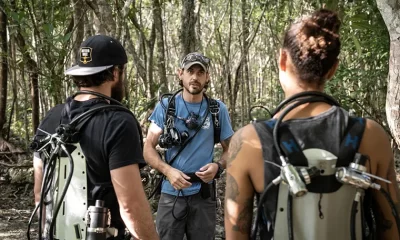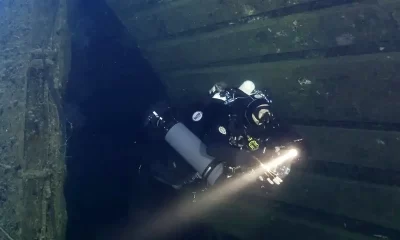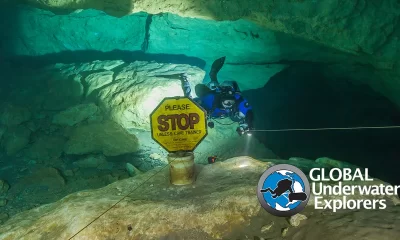Cave
Diving Into The Famous Ressel Cave
Belgium service member, cave explorer and tech instructor Kurt Storms takes us for a dive into the Ressel cave system located in Lot. Get out your reels.

By Kurt Storms. Photos courtesy of K. Storms unless noted.
The Lot and The Dordogne areas of France have an abundance of beautiful caves suitable for all levels of diving expertise, situated in glorious rural locations. Sites are mostly found on three rivers: The Dordogne, The Lot, and Célé. The Lot area lies in the northern extremity of the Midi-Pyrenees region, which stretches from the confines of the Dordogne Valley to the highest peaks of the Pyrenees, forming the heart of South-West France. Cave divers from all over the world return to dive here year after year. With over 20,000 known caves, France is one of the premier cave diving areas in the world. One of the most interesting regions lies in the Southwest, around the rivers of Lot and Dordogne. Here you find a multitude of long and deep caves with mostly crystal clear and relatively warm water, offering superb diving conditions. The water temperature averages 14º C/57º F and the visibility normally varies between 5-30 m/15-100 ft.
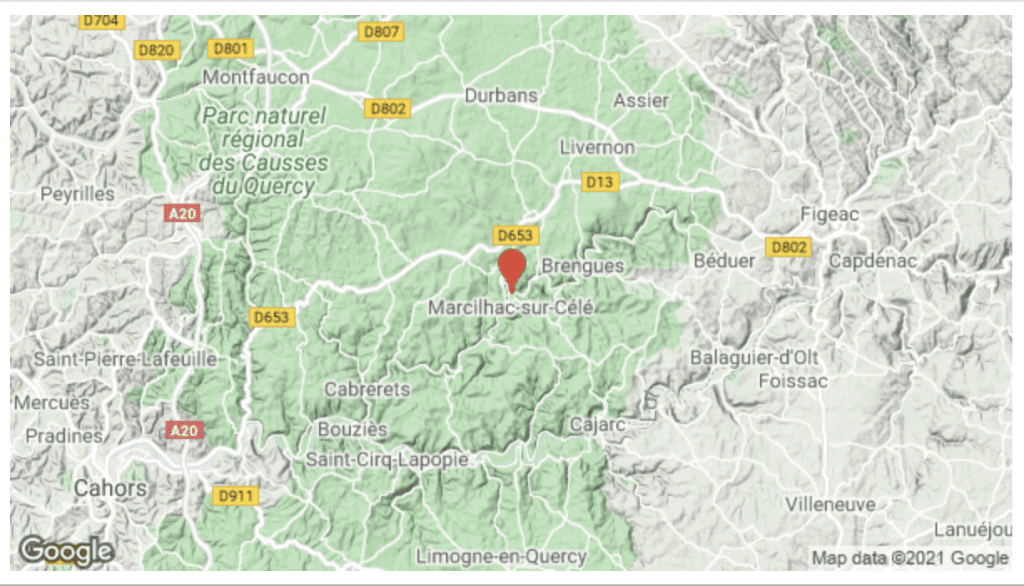
Finally!!! We can go to the Lot again. The COVID conditions have thrown a spanner in the works. But because we are all now vaccinated, we can finally leave. This time, for a week of training and then a week of diving holiday with my wife Caroline Massie. Two students (Jo Croimans and Bram Van Gorp) are with me for the training. The next few days, they will be busy with skills and dry teaching. Theory has already been given in Belgium so that we can get the most out of our dives.
Why the Lot?
The area in France is popular because most European divers take cave classes there so they don’t have to travel to Mexico or Florida. One of the most famous caves around here is Ressel. Ressel is located in the village of Marcilhac-sur-Célé, in the heart of the Lot. Most pictures you can see online show huge, dramatic blocks of white rock, flat structures, and the shafts of this cave. The facilities are pleasant, we have a large parking area for our cars, and finally there is also a conveniently located building with a toilet. From the car park we have only to walk about 100 m/330 ft to get to the entry point on the River Celé where we can put all our equipment needed for our dive.
Ressel History
The Ressel was first dived in 1968, by two divers of the speleo club Auvergnat. Martin and Debras reached 150 m/492 ft. It was only in 1973 that the line was extended to 300 m/984 ft, with a maximum depth of 30 m/100 ft. In 1975, Fantoli and Touloumdoian reached Pit 4 and went to a depth of 45 m/147 ft. Further exploration continued over the years, especially by Jochem Hasemayer in the early 1980s, where at 1100 m/3609 ft into the system he planted his knife in the rock to which he attached his line. This knife is still there.
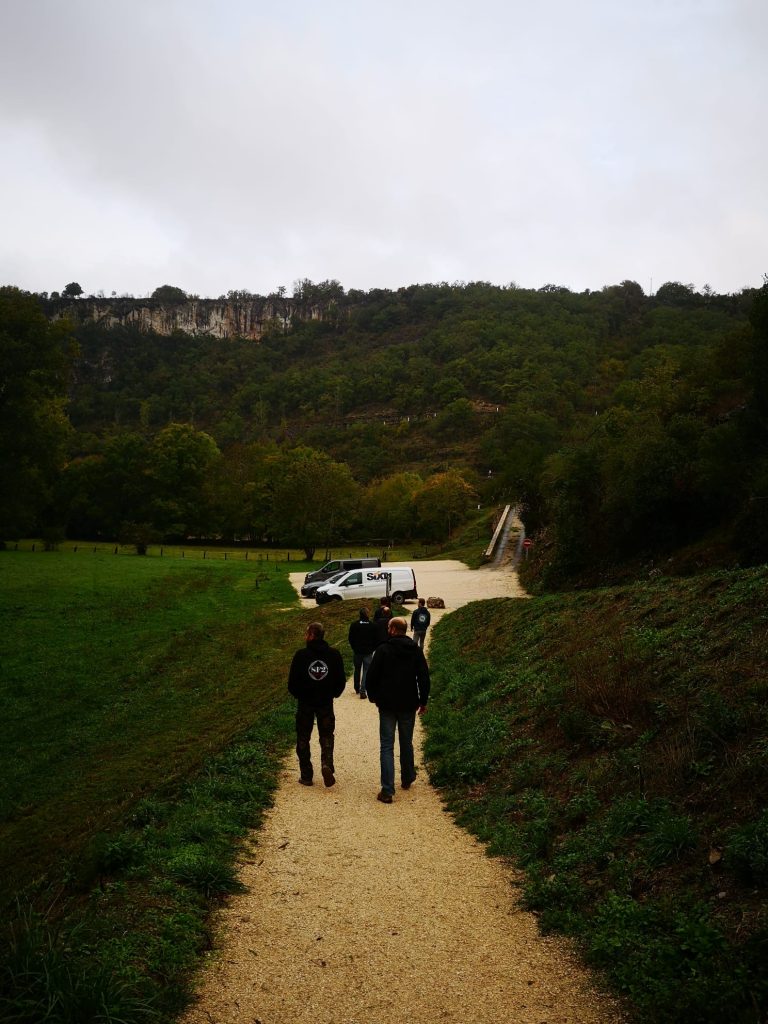
On August 12, 1990, Olivier Isler was the first to cross Sump 1. The total dive time back and forth was 10 h 35 min. End of Siphon 1 is at Lac Isler, and from there on you can continue to the next siphons. Ressel consists of 5 sumps, of which siphon 1 is the longest (1850 m/6070 ft) and the deepest (83 m/272 ft). From Pit 4 onwards, the deep section begins, which can only be done with trimix mixtures. In the following years, the further sumps were explored by gentlemen like Rick Stanton, Martin Farr, and Jason Mallison. In 1999, the end of Sump 5 was reached. The total length on the main line is 4415 m/14,485 ft.
Spectacular Views In The First Section
To be honest, the visibility is spectacular all around. More than 10 m/33 ft visibility, which was near zero before the start in the Celé River—quite a change. As soon as we got to the entrance, the water cleared like snow in the sun. The first thought that ever crossed my mind was: How on earth did they find this cave? How, with the visibility of the river, did anyone see a hole that is 6 m/20 ft below the surface on one side—which is frankly not that big. Enquiries with the locals revealed that when the cave is full of water, you can even see a geyser in the river! Another impressive detail.
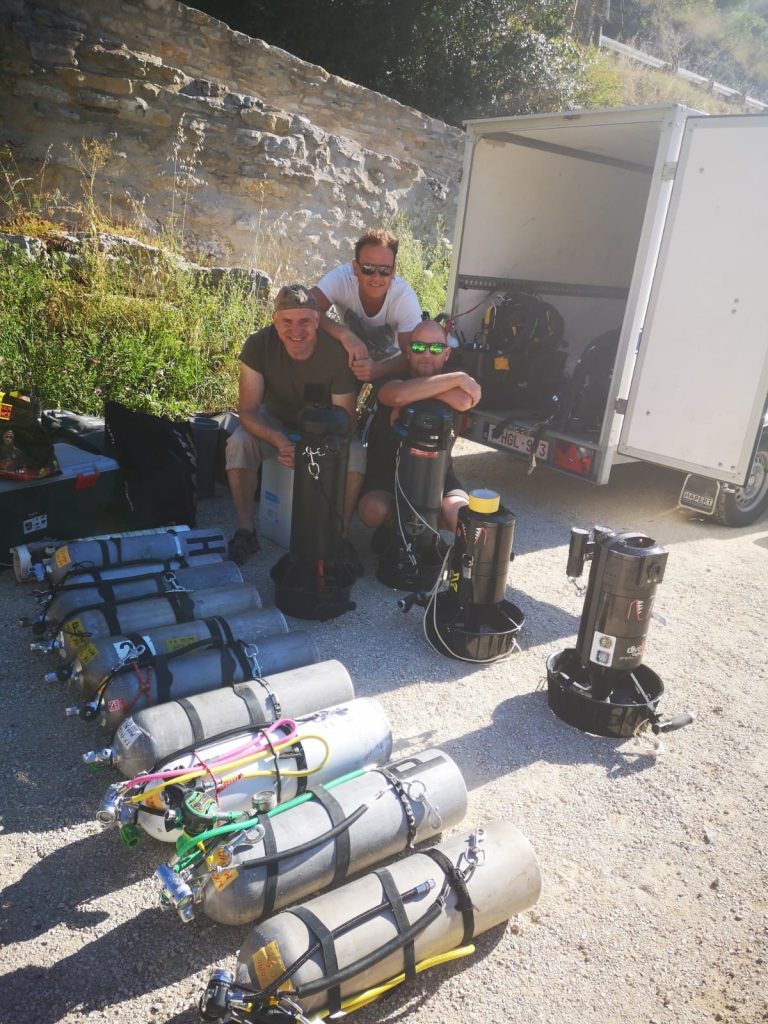
There is a rope that runs from the point where you get all the way into the cave, and it continues to the main line; you don’t need a primary reel here—it’s really easy to find the entrance, at 6 m/20 ft deep. Then there is a huge tunnel with white giant boulders, which is impressive.
The first dives were only up to the T (180 m/591 ft penetration), where the obligatory skills were practiced, so that later one can widen the comfort zone. This is also a very beautiful part, especially because of the large blocks that lie here. There are even two exceptional phenomena visible; these are two blocks consisting of white limestone, with a large black spot in it. You won’t find these black spots anywhere else. It is wonderful to be able to admire nature like this.
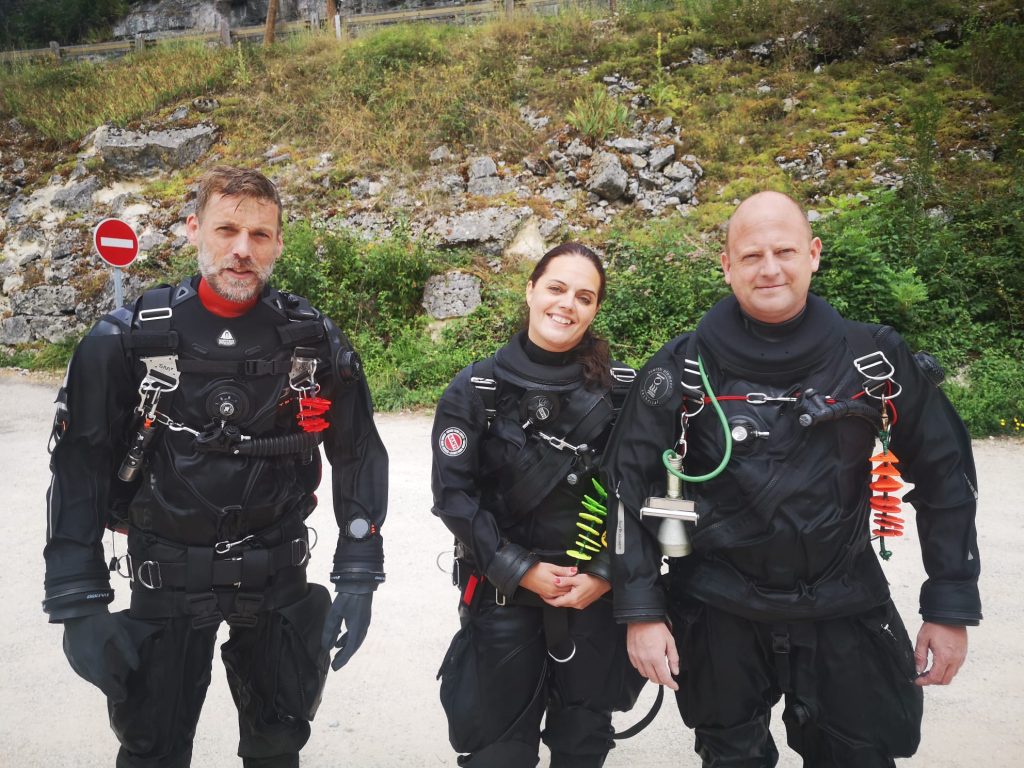
My wife, the students, and I got in, and on the first dive, with a sidemount set consisting of 2×80 cf (dual 11 ltr) tanks, we did the first T, taking the left corridor. On the next T, we continued toward the shaft to a maximum depth of 30 m/98 ft to take a look. It is so impressive! We felt like we were going to the abyss, and actually we were, to the abyss below ground and underwater. But now they were even more curious about the famous Pit 4 of the Ressel.
To be able to do this dive, we had to bring the right amount of gases. The first dive was with Jo Croimans, my student; he had his sidemount configuration with an extra 7 ltr along, I dived with my Divesoft Liberty SM rebreather. There we went, all prepared. The way there is about a 28 minute dive. On the way, I showed Jo the shunt that goes to the deeper part of the first loop. Enjoying the ride, we continued until we reached the point of the shaft.

Here I asked Jo if everything was Okay, he indicated that it was, and we descended to a depth of about 40 m/131 ft. I could see in Jo’s eyes that he was enjoying himself. But we didn’t have much time to enjoy ourselves, because we had to go back again. If you have deco, you can do it all on the way back on a nitrox 50 (NX50). For the advanced divers, you can take your oxygen at 6 m/20 ft and finish any decompression on O2.
It’s actually a great dive, and the cave allows for a variety of dives, just by choosing different depths in the tunnels, to have different perspectives.
Once we got to the top, Jo couldn’t stop exclaiming about the amazing beauty of this cave, and especially Pit 4. This made Caroline want to go and have a look too. This dive was done a few days later, when both gentlemen had gone home. This time we did the dive by scooter, a big difference. In 13 minutes we were at the shaft, and again I saw a happy face. How nice it is as an instructor to be able to pass on your passion. This is what we do it for. Ressel is one of the most beautiful caves in Europe. It remains an easy, accessible system.
The Ressel is and will always remain a special cave. Last year, I did the deep loop (1160 m/3806 ft long, 73 m/240 ft depth) here with two friends. And I still enjoy it when I talk about it. We still have to come back to do the rest of S1.
Dive Deeper:
X-Ray: Pushing the Ressel—A Cave Diving Expedition in Lot, France by Erik Wouters (2013)
YouTube: Cave diving in France: Emergence du Ressel (2016)
Facebook: Here is a cave exploration project also going on nearby in Lot, France https://m.facebook.com/thehiddenriverproject. Find their map: here.
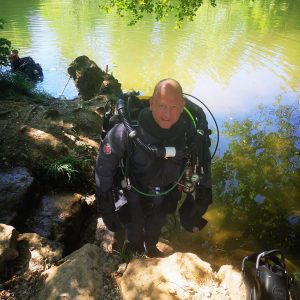
Kurt Storms is a member of the Belgium military, and is an underwater cave explorer and active technical/cave/rebreather diving instructor for IANTD. He started his diving career in Egypt when he was on vacation, and the passion never ended. Kurt is also founder and CEO of Descent Technical Diving. He’s diving on several CCRs such as AP, SF2, Divesoft Liberty SM.
Kurt is also one of the pushdivers that is documenting a new slate mine in Belgium (Laplet). This project was news on Belgium Nationale TV. Most of his dives are mine and cave dives. In his own personal diving, Kurt’s true passions are deep extended-range cave dives. His wife (Caroline) is also a passionate cave diver. In his free time he explores Belgium’s slatemines. When he is not exploring, he takes his camera with him, to document the dives.





















